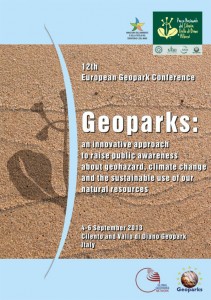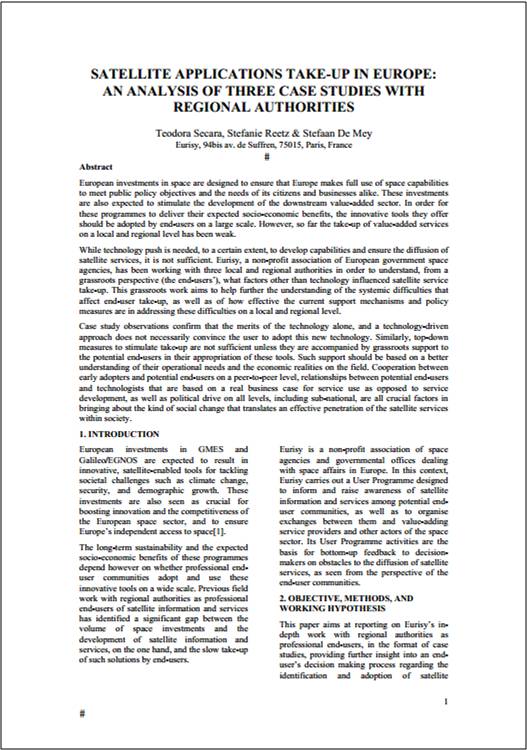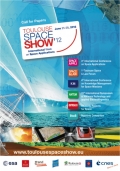Monitoring and valuing the European geological heritage: operational uses of satellite applications
 Geological and landscape diversity is an essential part of the European culture. It characterises our rural and urban environments and offers the resources needed to sustain human communities. To monitor and protect geological heritage, back in 2003 the European Parliament stressed the importance of harmonising analytical methods to obtain comparable soil data and of increasing the exchange of information among Member States on soil, topography, structure and natural form of the land in Europe (European Parliament, 2003).
Geological and landscape diversity is an essential part of the European culture. It characterises our rural and urban environments and offers the resources needed to sustain human communities. To monitor and protect geological heritage, back in 2003 the European Parliament stressed the importance of harmonising analytical methods to obtain comparable soil data and of increasing the exchange of information among Member States on soil, topography, structure and natural form of the land in Europe (European Parliament, 2003).
Today, satellites offer the opportunity to collect and access geological and biological information covering large areas, including urban, rural and natural environments at the micro and macro regional levels. On their own initiative, or within European and national schemes, local and regional managers are already using satellite services to monitor, protect and promote geological, landscape and biological diversity. To disseminate the results of these initiatives is fundamental to capitalise on experience to develop new services adapted to local needs, and to set the basis for the establishment of an integrated coherent system to manage geodiversity in Europe. Eurisy, a non-profit association of space agencies, works to foster awareness of operational uses of satellite applications in this and other sectors. Paper presented at the 12th European Geoparks Conference, Cilento and Vallo di Diano Geopark, Italy, 4-6 September 2013.

 Case study observations confirm that the merits of the technology alone, and a technology-driven approach does not necessarily convince the user to adopt this new technology. Similarly, top-down measures to stimulate take-up are not sufficient unless they are accompanied by grassroots support to the potential end-users in their appropriation of these tools. Such support should be based on a better understanding of their operational needs and the economic realities on the field. Cooperation between early adopters and potential end-users on a peer-to-peer level, relationships between potential end-users and technologists that are based on a real business case for service use as opposed to service development, as well as political drive on all levels, including sub-national, are all crucial factors in bringing about the kind of social change that translates an effective penetration of the satellite services within society. Paper presented at the
Case study observations confirm that the merits of the technology alone, and a technology-driven approach does not necessarily convince the user to adopt this new technology. Similarly, top-down measures to stimulate take-up are not sufficient unless they are accompanied by grassroots support to the potential end-users in their appropriation of these tools. Such support should be based on a better understanding of their operational needs and the economic realities on the field. Cooperation between early adopters and potential end-users on a peer-to-peer level, relationships between potential end-users and technologists that are based on a real business case for service use as opposed to service development, as well as political drive on all levels, including sub-national, are all crucial factors in bringing about the kind of social change that translates an effective penetration of the satellite services within society. Paper presented at the  This paper presented at the 2012 Toulouse Space Show, France aims at underlining, through concrete examples, how European cities make the most of satellite information and services, and satellite navigation in particular, to achieve sustainable urban mobility and create viable alternatives to owning a private vehicle. Without being exhaustive, the operational examples described also show how the integration of satellite information and services in urban mobility strategies benefits other policy areas of increasing importance, like health and social inclusion.
This paper presented at the 2012 Toulouse Space Show, France aims at underlining, through concrete examples, how European cities make the most of satellite information and services, and satellite navigation in particular, to achieve sustainable urban mobility and create viable alternatives to owning a private vehicle. Without being exhaustive, the operational examples described also show how the integration of satellite information and services in urban mobility strategies benefits other policy areas of increasing importance, like health and social inclusion. The Paper outlined Eurisy’s User Programme objectives, methodology and results. It was presented at the IAF 2008 IAC conference in Glasgow (IAC-08-D1.1.01.)
The Paper outlined Eurisy’s User Programme objectives, methodology and results. It was presented at the IAF 2008 IAC conference in Glasgow (IAC-08-D1.1.01.)